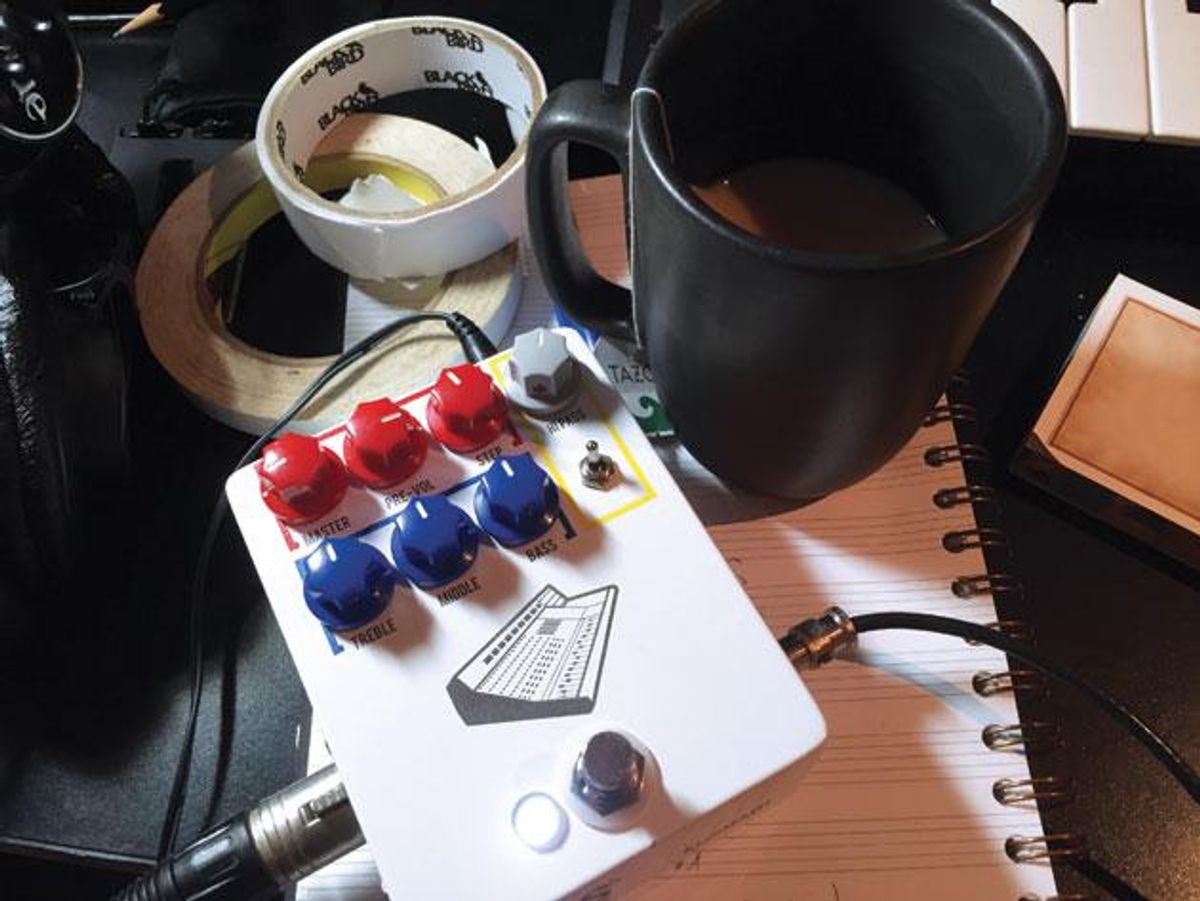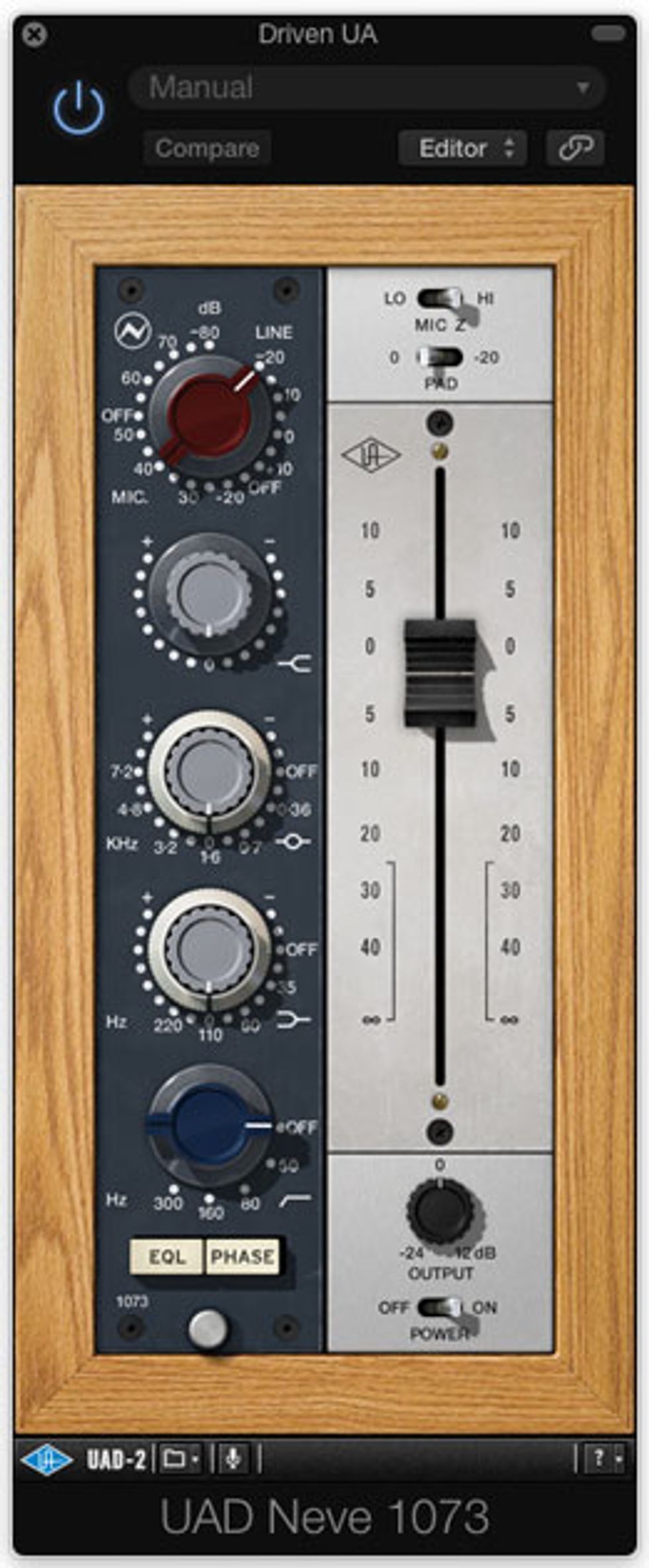
Photo 1: JHS's Colour Box is a simplified clone of a pricy Neve input channel, complete with that signature preamp distortion.
Sometimes it’s good not to have an amp-like tone.
If you're a student of classic recording—and what studio geek isn't?—you probably know that many great rock and pop guitar tones were recorded directly into the board without an amp.
We've looked at direct recording before, but always in conjunction with modern amp modelers. But how did Jimmy Page get such a great direct-recorded rock guitar tone on “Black Dog" back in 1971? Or Paul McCartney on 1968's “Helter Skelter?" Or Roger McGuinn on 1965's “Mr. Tambourine Man?" Not to mention all the great D.I. tones on Motown's pop, Nile Rogers' disco, and countless great African records? Let's explore.
Tones that hurt. For the vintage-style R&B lick in Ex. 1,Ijust plugged a humbucker-equipped guitar into a clean preamp/interface. It's a dry, clinical tone, but you can probably imagine how, with a little EQ, compression, and reverb, it might fit nicely into a retro pop/R&B arrangement. The fact that it has higher highs and lower lows than most miked-amp tones might even be a plus.
For a truly hideous sound, add distortion before hitting the input. We're used to hearing tones of this type filtered by tube amps, speakers, and mics. But recording direct this way (as heard in Ex, 2) sounds nasty. (Okay, I uses tones like this fairly often, but only when nastiness is the goal.)
In my last column (“Is It a Sin to Scoop Your Mids?"), we saw how a typical amp's tone profile is far from flat—there's usually a big-ass midrange scoop, no matter how the amp's midrange control is set.
In Ex. 3, I've added a Marshall-flavored EQ contour: a roughly 10 dB scoop around 750 Hz, fewer lows, some extra bite around 2 kHz, and nothing above 4 kHz or so. (Plus compression and a pinch of plate reverb.)
Sure, it's more listenable, but it's still not what most of us would consider a classic rock tone.
Or is it? Quick—go listen to “Black Dog." Obviously, I didn't mimic Page's part or tone, but I suspect that now, after scrutinizing examples of direct-recorded solid-state distortion, you'll hear the sound with new ears. It totally does that flat, full-frequency D.I. thing! It works splendidly, of course—partly because bass doubles the guitar at the octave, masking some telltale overtones, and partly because Pagey is so damn good.
Pummel that preamp. But most such vintage D.I. tones weren't created using distortion pedals. More often, the distortion came from overdriven channel preamps and compressors, plus oversaturated tape. No problem—if you've got a vintage Helios board, 1971 Urei compressors, and a 2" multitrack recorder. But what about us regular schnooks with DAWs and plug-ins?
The market's flooded with inexpensive vintage preamp clones. There's even a cool stompbox option: the JHS Colour Box, a simplified Neve preamp in pedal form (reviewed December 2014). For Ex. 4, I floored the JHS preamp and added amp-like EQ and compression, plus a touch of reverb.
What about mimicking that overdriven hardware effect solely in software? If you'd asked five years ago, I'd have been pessimistic. I agreed with what my engineer and producer pals always said: Plug-ins can sound convincing at moderate settings, but not extreme ones. They just couldn't match the harmonic complexity of overworked analog gear.
Photo 2: Plug-ins are getting better at evoking the extreme and distorted aspects of the hardware they model. Universal Audio's software Neve 1073 is a perfect example. (Note the maxed-out mic input knob.)
Things have changed. Faster processors and more nuanced modeling spawned plug-ins that can mimic that craziness. For example, the tone in Ex. 5 is 100 percent software—I recorded squeaky-clean into an audio interface, but added distortion from several Universal Audio plug-ins. I slammed the plug-in version of Neve's 1073 preamp/EQ, and compounded the crunch with an overdriven compressor and tape simulator.
But why? Why bother in a world of great-sounding amp simulators? For all its processing, Ex. 5 sounds nothing like a real guitar amp. But that's the point: crafting unconventional tones with unconventional crunch. These sounds have power, presence, and at times, face-slapping ugliness. Sometimes you need those things to magnify a song's emotional core.
But these methods don't have to sound ugly. Ex. 6 uses the same setup as Ex. 5, but with a touch of tremolo and the faux-analog distortion dialed way back. It's a pretty, introspective tone that I'd gladly use on a track—depending, as always, on the context.


